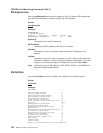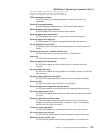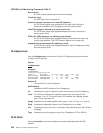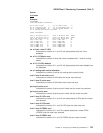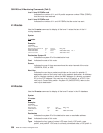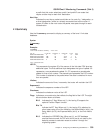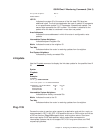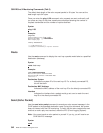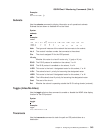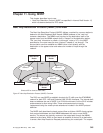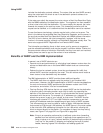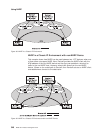
End System Neighbors Metric
00009310004F0 *
LSP ID
Indicates the system ID of the source of the link state PDU plus two
additional bytes. The first byte designates the type of update. 00 represents
a non-pseudonode update. 01–FF represents a pseudonode update. The
second byte represents the LSP number. This number is attached to the
packet when the data is contained in more than one packet.
Area Addresses
Indicates the area addresses in which this router is configured to route
packets.
Intermediate System Neighbors
Indicates adjacent neighbor ISs.
Metric Indicates the cost to the neighbor IS.
Two Way
Indicates whether the router is receiving updates from its neighbor.
End System Neighbors
Indicates any directly connected ESs.
L2-Update
Use the l2-update command to display the link state update for the specified level 2
IS.
Syntax:
l2-update
Example:
l2-update
LSP ID []? 0000931004F0000
Link State Update For ID 0000931004F00000
INTERMEDIATE SYSTEM NEIGHBORS METRIC TWO WAY
0000931004F002 20 N
0000931004F001 20 N
55002000182000 20 N
Intermediate System Neighbors
Indicates other directly connected ISs.
Metric Indicates the cost to the IS.
Two Way
Indicates whether the router is receiving updates from its neighbor.
Ping-1139
Causes the router to send an echo request to a destination and wait for a reply, as
recommended in RFC 1139. RFC 1139 specifies this as an OSI function and not as
a DECnet function. Ping-1139 supports short- and long-term echos. Short-term
echos use regular CLNP data packets, which makes them transparent to
intermediate systems that do not support RFC1139. Long-term echos use PING
request/reply packets.
OSI/DECnet V Monitoring Commands (Talk 5)
Chapter 10. Configuring and Monitoring OSI/DECnet V 341




